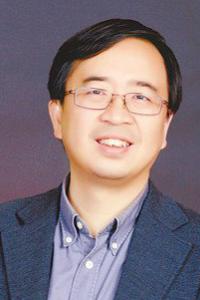Prof. Jian-Wei Pan, born in Mar, 1970, is a full professor of physics at the University of Science and Technology of China. He obtained his Ph.D. degree in 1999 from the University of Vienna. In 2011, he was elected as the academician of Chinese Academy of Sciences (CAS). In 2011, he was appointed as the chief scientist of the quantum science experiments satellite. In 2012, he was elected as TWAS Fellow. In 2014, he was appointed as the director of the CAS Center for Excellence in Quantum Information and Quantum Physics.
The research of Prof. Jian-Wei Pan focuses on quantum information and quantum foundations. As one of pioneers in experimental quantum information science, he has accomplished a series of profound achievements, which has brought him worldwide fame. Due to his numerous progresses on quantum communication and multi-photon entanglement manipulation, quantum information science has become one of the most rapidly developing fields of physical science in China in recent years. His work in the field of quantum information and quantum communication has been recognized by Nature as “features of the year 2012” and “the science events that shaped the year 2016 and 2017”, by Science as “Breakthrough of the Year 1998”, by the American Physical Society websites as “The top physics stories of the year” (six times), and by the Physics World, Institute of Physics as “Highlights of the year” (six times). Within China, his work has been selected for eleven times as “The Top Ten Annual Scientific and Technological Progresses in China”.
Related Publications
- Entangling Two Rydberg Superatoms via Single-Photon Interference. Physical Review Letters 135, 110802 (2025).
- Entangling Two Rydberg Superatoms via Heralded Storage. Physical Review Letters 134, 230803 (2025).
- Active Optical Intensity Interferometry. Physical Review Letters 134, 180201 (2025).
- AI-Enabled Parallel Assembly of Thousands of Defect-Free Neutral Atom Arrays. Physical Review Letters 135, 60602 (2025).
- Experimental Quantum Error Correction below the Surface Code Threshold via All-Microwave Leakage Suppression. Physical Review Letters 135, 260601 (2025).
- High-efficiency single-photon source above the loss-tolerant threshold for efficient linear optical quantum computing. Nature Photonics (2025). doi:10.1038/s41566-025-01639-8
- Microsatellite-based real-time quantum key distribution. Nature (2025). doi:10.1038/s41586-025-08739-z
- Programmable higher-order nonequilibrium topological phases on a superconducting quantum processor. Science 930-934 (2025). doi:10.1126/science.adp6802
- Realization of an untrusted intermediate relay architecture using a quantum dot single-photon source. Nature Physics 21, (2025).
- Scalable photonic quantum technologies. Nature Materials 24, 1883-1897 (2025).
